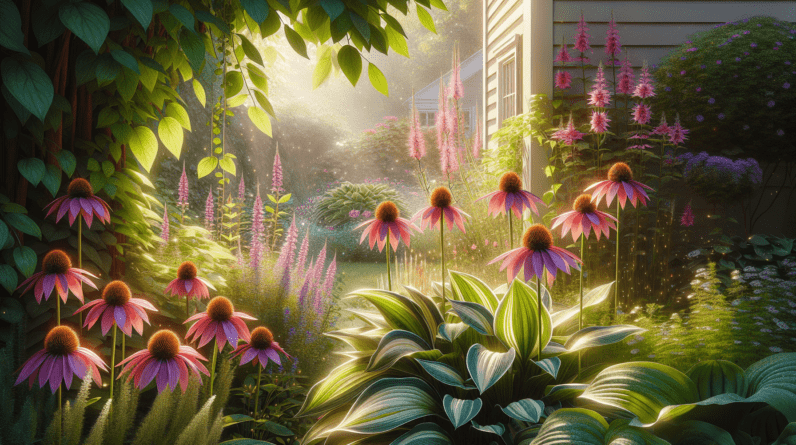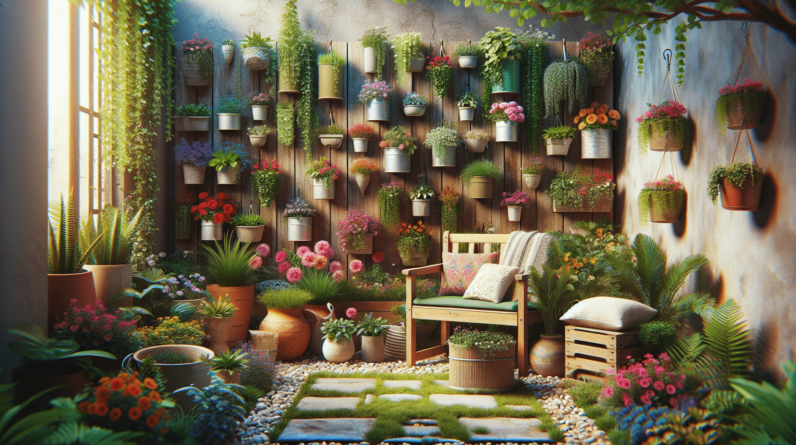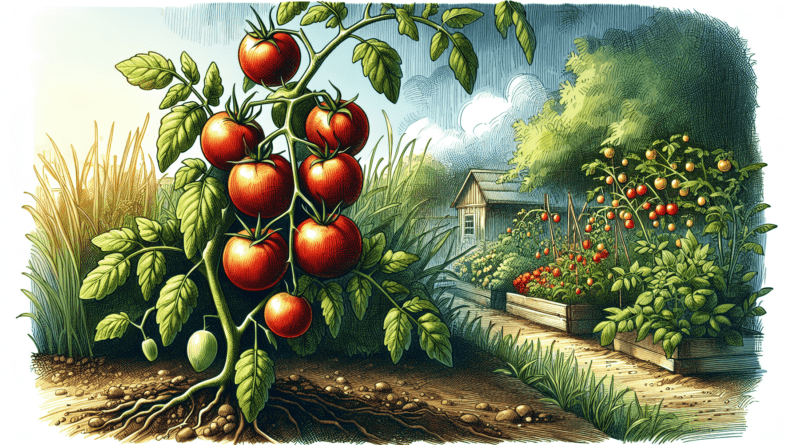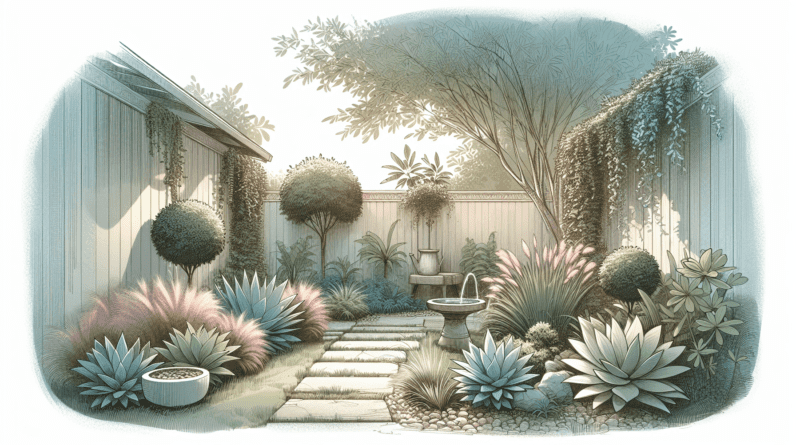Planning a backyard garden that delivers a bountiful harvest can be both rewarding and enjoyable if you know the right steps to take. In “How to Plan Your Backyard Garden Layout for Maximum Yield,” you’ll explore practical tips on arranging your plants, choosing the ideal locations for sunlight, and making the best use of your space. By following the advice in this guide, you’ll be well on your way to transforming your yard into a prolific green retreat that will have you gathering fresh veggies and herbs all season long. Let’s dig in and turn your garden dreams into a fruitful reality! Have you ever wondered how to create a backyard garden that practically bursts with fresh vegetables and flowers? Well, friend, you’re not alone. Many aspiring gardeners dream of harvesting an abundant yield from their backyard paradise. Planning your garden layout for maximum yield requires a bit of thought and a smidgen of strategy. But it’s well worth it. Let’s take a delightful stroll through what you need to know and do to make your dream garden a reality.
Why Plan Your Garden Layout?
A well-laid-out garden isn’t just about aesthetics—even though a beautiful garden does have its allure, right? It’s about making the most of your space, resources, and time. When you plan your garden layout, you ensure that every plant gets what it needs to thrive, ultimately helping you achieve the greatest possible yield.
Space Efficiency
No one enjoys wasting space, especially when it comes to a backyard garden. Every square foot is precious. By planning your layout, you can maximize the space and grow more plants. Think vertical gardening, raised beds, and even container gardening!
Resource Management
Water, sunlight, and soil quality are critical resources for your plants. With proper planning, you can ensure each plant gets adequate water and sunlight. For example, placing taller plants where they won’t cast shadows on shorter, sunlight-loving plants.
Ease of Maintenance
Let’s face it, gardening takes effort. When you plan your garden layout, you can organize your plants in a way that makes watering, weeding, and pruning as simple as possible.
Assessing Your Garden Space
Before you start planting, take a good long look at your available space. Your garden’s size, shape, and even the type of soil will all influence how you should lay it out. Here’s how to get started:
Measure Your Space
Grab a tape measure and jot down the dimensions of your gardening area. Knowing the exact size helps you make better decisions about what and how much you can plant. Sketch it out, if you’re artistically inclined, or use an online garden planner.
Identify Sunlight Patterns
Spend a day—or at least a couple of hours—observing where the sunlight hits your garden. Where does the sun rise? Where does it set? Take note of areas that get full sun, partial shade, and full shade. Different plants have different light requirements, and this information will help you decide where to place each type of plant.
Test Your Soil
Your plants will pretty much grow as well as your soil allows. So, grab a testing kit and determine the pH and nutrient levels in your soil. Is it clay, sandy, or loamy? Knowing your soil type will help you choose plants that will thrive and guide you on soil amendments you might need.
Choosing What to Plant
With your garden space assessed, it’s time to decide what to plant. This step is vital for achieving maximum yield. What you plant can either work together like a smoothly oiled machine or compete for all the resources, leaving you with a less-than-ideal harvest.
Grow What You Love
First things first, what do you like to eat? There’s no sense in growing tons of kale if spinach is your true love. Write a list of your favorite vegetables, fruits, and herbs. This ensures that your effort will be rewarded with a harvest that makes your heart (and stomach) happy.
Consider Your Climate
Not every plant loves the same weather. Look at your local climate and hardiness zone. Are you in a hot, dry area or a cool, wet one? Choose plants that are known to do well in your conditions. This will save you a lot of frustration and increase your chances of a bountiful garden.
Companion Planting
Some plants just get along better with each other, while others are like ill-matched roommates. Companion planting is the practice of growing plants nearby because they mutually benefit each other. For example, basil likes to hang out with tomatoes, but steer clear of planting garlic near beans.
Here’s a quick guide to some common companion plants:
| Crop | Companion Plants | Plants to Avoid |
|---|---|---|
| Tomatoes | Basil, Marigold, Carrots | Potato, Fennel |
| Cucumbers | Radishes, Corn, Dill | Sage, Potato |
| Beans | Corn, Squash, Cucumber | Garlic, Onion |
| Carrots | Peas, Lettuce, Rosemary | Dill, Fennel |
Rotating Crops
If you plan to garden year after year, it’s wise to rotate your crops. Growing the same plants in the same spot each year can deplete the soil of specific nutrients. By rotating your crops, you can maintain healthier, nutrient-rich soil.
Designing Your Garden Layout
Now that you have a good idea of what you’ll be planting, it’s time to design your garden layout. This involves deciding the arrangement and spacing of your plants to make the most out of your garden. Let’s break it down:
Creating Garden Beds
Garden beds can be arranged in rows, squares, or even intricate patterns if you’re feeling creative. Raised beds are a popular choice, especially if your soil quality isn’t great. They offer good drainage and can be filled with the best soil and compost mix, giving your plants a fantastic start.
Spacing Matters
You might be tempted to cram as many plants into your garden as possible. After all, closer plants mean more yield, right? Well, not quite. Overcrowding can lead to diseases, less sunlight and hinder growth. Stick to the recommended spacing for each plant you’re growing.
Here’s a general spacing guideline:
| Plant Type | Row Spacing | Plant Spacing |
|---|---|---|
| Lettuce (leaf) | 12-18 inches | 6-12 inches |
| Tomatoes (staked) | 24-36 inches | 18-24 inches |
| Carrots | 12-18 inches | 2-3 inches |
| Beans (bush) | 18-24 inches | 4-6 inches |
Consider Plant Heights
Place taller plants like sunflowers and corn on the north side of your garden area. This way, they won’t cast shadows over shorter plants that need more sunlight. Keep mid-height plants in the center and shorter plants towards the edges.
Accessibility
Ensure you can easily access all parts of your garden. Leave space for pathways so you can water, weed, and harvest without trampling your plants. Wide enough to accommodate your wheelbarrow or even just a comfortable walking space can make all the difference in your gardening experience.
Watering Systems
Water is life, especially for your garden. Efficient watering is critical for maximum yield. There are several watering methods you can choose from, and picking the right one can make your life easier and your plants happier.
Drip Irrigation
Drip irrigation systems deliver water directly to the base of your plants. This reduces water waste and ensures that plants get a steady supply of moisture. It’s an efficient method perfect for larger gardens.
Soaker Hoses
Soaker hoses are another water-efficient method. These hoses have tiny pores that allow water to seep out slowly, watering your garden evenly. Lay them out before planting for an easier setup.
Hand Watering
Hand watering gives you greater control but can be time-consuming, especially for larger gardens. It’s best for newly planted seedlings or delicate plants that need a gentle touch.
Rainwater Harvesting
Have you ever thought about capturing rainwater? It’s eco-friendly and can reduce your water bill. Set up a rain barrel connected to your gutters to collect water, which you can then use to hydrate your garden.
Mulching and Composting
Mulching and composting are your garden’s best friends. They help retain moisture, enrich the soil, and suppress weeds—which means less work for you!
Benefits of Mulching
Mulching involves covering the soil with organic or inorganic material, like straw, wood chips, or black plastic. It helps retain moisture, regulates soil temperature, and prevents weed growth.
Composting for Nutrients
Composting is the process of recycling organic material, like kitchen scraps and yard waste, into a rich soil amendment. Composting enriches your soil, improving its structure and providing essential nutrients for your plants.
How to Mulch
Spread a 2-4 inch layer of mulch around your plants. Be careful not to pile it up against the stems, as this can cause rot. Refresh your mulch layer as needed throughout the growing season.
How to Compost
Set up a compost bin in a convenient location in your backyard. Layer green materials (like fruit peels and grass clippings) with brown materials (like dried leaves and paper). Turn the compost every few weeks to speed up the decomposition process. In a few months, you’ll have rich compost to spread over your garden beds!
Managing Pests and Diseases
Nothing spoils a gardener’s day like finding their beloved plants ravaged by pests or diseases. But don’t worry, you can deter these garden grumblers with a few savvy strategies.
Identify the Culprits
First, figure out what you’re dealing with. Regularly inspect your plants for signs of pests or diseases. Look for things like chewed leaves, stunted growth, or discoloration.
Natural Pest Control
There are many ways to manage pests without resorting to harsh chemicals. Introduce beneficial insects like ladybugs and lacewings, which feast on harmful pests. Planting pest-repellent plants like marigolds and garlic can also help.
Organic Solutions
Neem oil, insecticidal soaps, and diatomaceous earth are great organic options to keep pests at bay. Keep these handy in your gardening toolkit for when you notice the first signs of trouble.
Crop Rotation
As mentioned earlier, rotating crops can help manage soil-borne diseases. Each plant absorbs and returns different nutrients to the soil, reducing the risk of diseases and pests that target specific plants.
Healthy Plants Resist Disease
The healthier your plants, the better they can resist disease. Make sure you’re providing the right amount of water, sunlight, and nutrients to keep your plants robust and resilient.
Seasonal Planting
Understanding your local growing seasons is key to a successful garden. Planting the right crops at the right times ensures you’re making the most of each growing period.
Cool-Season Crops
Cool-season crops thrive in cooler temperatures and can be planted in the early spring or fall. Examples include lettuce, spinach, peas, and radishes. These plants often bolt (go to seed) in hot weather, so get them in the ground early!
Warm-Season Crops
Warm-season crops need higher temperatures to grow and should be planted after the last frost date in your area. Popular warm-season crops include tomatoes, cucumbers, beans, and peppers. They love the heat but might need some protection during extremely hot days.
Succession Planting
Want to get even more out of your garden space? Try succession planting, where you plant new crops in the same space after harvesting the first batch. This way, you can enjoy fresh produce throughout the growing season.
Overwintering Crops
Some crops can be grown throughout the winter, depending on your climate. Kale, garlic, and certain flower varieties can handle frost. Protect them with a layer of mulch or a cold frame to keep them cozy during colder months.
Harvesting for Maximum Yield
After all your hard work, it’s finally time to harvest your produce. But how and when you harvest can make a big difference in the yield and quality of your crops.
Harvest at the Right Time
Each plant has its optimal harvest time. Harvesting too early might yield smaller and less flavorful produce, while harvesting too late might result in overripe, tough, or bitter vegetables.
Regular Harvesting
Frequent harvesting encourages plants to produce more. For example, picking beans, peppers, and tomatoes regularly can spur the plant to keep producing throughout the season.
Proper Harvesting Techniques
Use clean, sharp tools to harvest your crops. Avoid damaging the plant, as this can lead to diseases or reduce future yields. For example, use pruning shears to snip tomatoes rather than pulling them off the vine.
Storage and Preservation
Fresh produce is delightful, but sometimes you can’t eat it all at once. Learn how to store and preserve your harvest to enjoy your garden’s bounty throughout the year. Canning, freezing, drying, and fermenting are all great options to consider.
Reflect and Plan for Next Year
As the gardening season winds down, take some time to reflect on what went well and what didn’t. This will help you plan even better for next year.
Keep a Garden Journal
Note down what you planted, where, and when. Record the yields, any pests or diseases, and how you dealt with them. This journal will be a valuable reference for future seasons.
Celebrate Your Successes
Pat yourself on the back for your successful harvest and the new skills you’ve learned. Gardening is a journey, and every season brings new experiences and lessons.
Plan Improvements
Think about what you’d like to change or try next year. Maybe you want to try a new watering system, experiment with different crop varieties, or design a more efficient layout. Planning ahead can give you a head start for the next gardening season.
So there you have it, a comprehensive guide to planning your backyard garden layout for maximum yield. With a bit of thoughtful planning, attention to detail, and a love for gardening, you’ll be well on your way to a bountiful harvest and a garden you can be truly proud of. Happy gardening!







